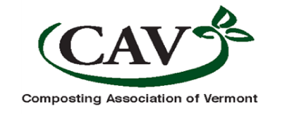How can I know that the compost I buy is okay to use?
Compost has been in the news, and not all the press is good. There are concerns about invasive worms, PFAS, and other potential contaminants. You might find yourself wondering: How can I know that the compost I buy is okay? A wise consumer knows what to look for and what questions to ask. We'll arm you with information based on science and outline all the benefits we collectively share when we keep food scraps out of landfills and in compost systems - and use compost in our gardens and yards.
Learn more about your concerns & understand what questions to ask to ensure you're buying compost you can feel good about using.
Perfluoro…what? What PFAS are and why should you care
Vermont composters work diligently to assure clean inputs and to refuse materials that may pose a risk to your compost, even when the hazard can’t be seen.
You may have heard about perfluoroalkyl and polyfluoroalkyl substances (PFAS) and the impact they can have on human health and the environment. PFAS are a very large group of chemicals primarily used to make non-stick cookware, water-repellent clothing, stain-resistant fabrics and carpets, some cosmetics, firefighting foams, and oil, grease, and stain-resistant products. PFAS have also been used in food packaging, coated paper plates, certain compostable products and molded fiber serving ware - although this practice is being phased out.
Because PFAS are widely used and notoriously slow to break down in the environment, they are found in the blood of humans and animals worldwide. According to the Vermont Department of Health, PFAS exposure may result in a variety of human health impacts, including cancer and negative impacts on development, and function of the liver, thyroid, and immune system.
What does this mean for your compost?
Curious about which foodware products have PFAS?
The Center for Environmental Health created a database
of single-use food service ware products tested for fluorinated additives which lists many commonly found products.
Good news! Items known to contain the highest concentrations of PFAS (such as those listed above) are not commonly composted. Most commercial compost facilities in Vermont do not accept compostable foodware, and those that do can choose to accept only foodware certified to have no added PFAS. Additionally, the exposure route from compost requires PFAS uptake by the edible plant tissue and then consumption by humans. This means that finished compost is less likely to be a PFAS exposure risk to humans than other direct ingestion pathways such as drinking water, cookware etc.
To verify the safety of compost that is sold in the state, the Agency of Natural Resources is currently kicking off a novel sampling project to assess PFAS concentrations in the food recycling system, including food packaging, source-separated food scraps, compost, and anaerobic digestate. The data gathered will be used to improve the safety of our organics recycling system and to inform policy and rulemaking going forward.
What can you do?
Make sure that the food waste you are trying to compost/recycle is actually food waste! Although containers, cosmetics, and packaging may technically be compostable, you’re probably better off disposing of those by other means and sticking with traditional compost inputs like food waste, leaves, plant matter, and manures. Be sure to inquire with your composter about what’s acceptable before including other items, even if they’re labeled “compostable.”


